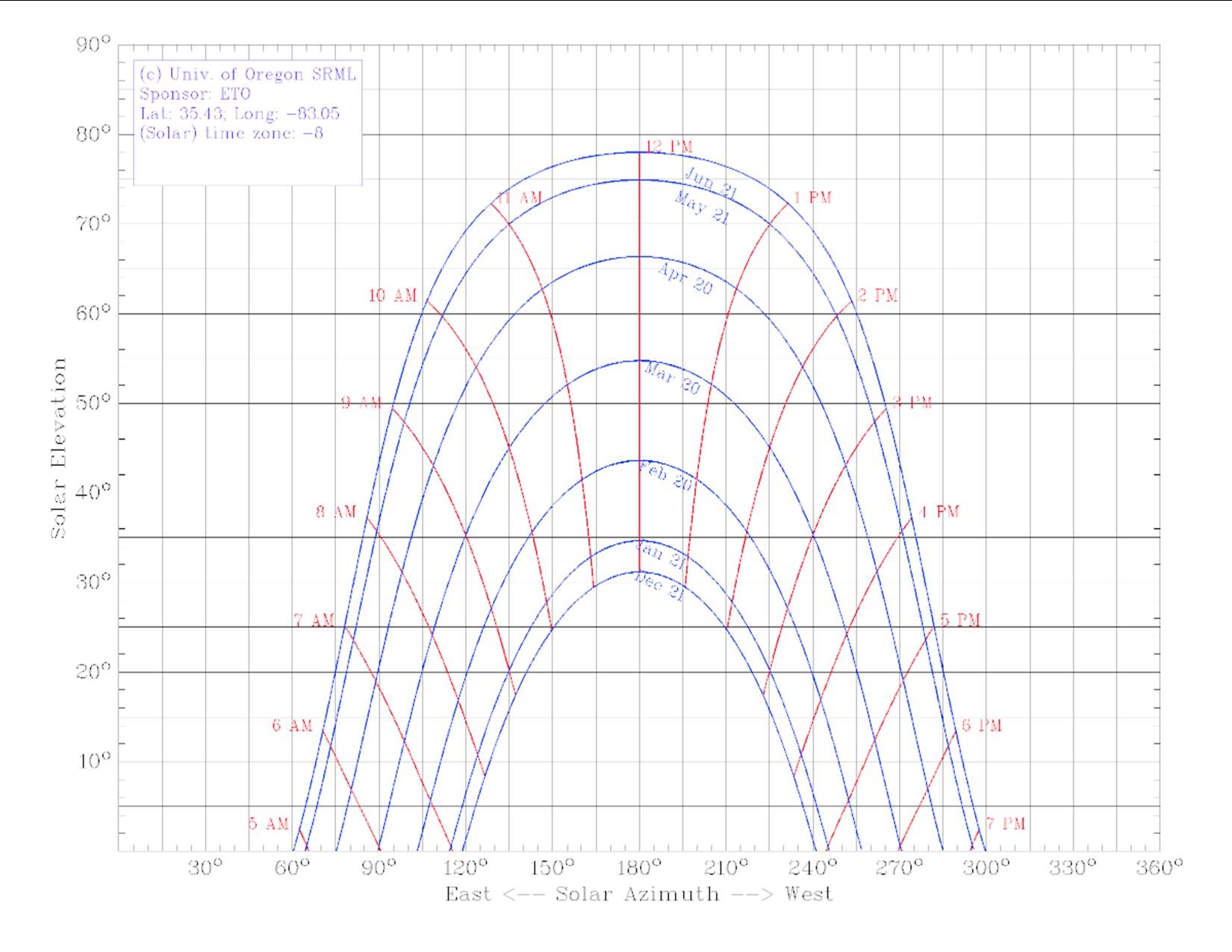For optimum power production from a photovoltaic array, the array must be facing the sun at a perpendicular angle. Because the sun is traversing our sky, the orientation of the solar array would need to be constantly changing. For cost reasons, this is not practical for most installations so a compromised location needs to be determined.
Solar plots can be generated at the following website:
http://solardat.uoregon.edu/SunChartProgram.html

Azimuth
Since we are in the northern hemisphere, the array must face True South. For Haywood ECM service area, True South is 5 degrees West of Magnetic South.
Tilt Angle
Seasonal changes of the sun’s altitude must be considered to optimize a system’s performance. The following details outline the optimum tilt angle of the photovoltaic array for different seasonal loads:
Year round loads - tilt angle equals latitude
Winter loads - Tilt angle equals latitude plus 15 degrees
Summer loads - tilt angle equals latitude minus 15 degrees
Latitude of Haywood EMC service area - 35 degrees
The following is a website to determine exact latitude:
http://itouchmap.com/latlong.html
Shading
Be sure that the array is not shaded from 9 AM to 3 PM on any day throughout the year. Be careful to identify any possible obstacles such as trees, buildings, etc which could result in shading the array.
Location of the array
In addition to proper orientation, the array must be supported and protected from physical damage such as from wind, snow, ice, and lightning damage. If located on a roof, care must be taken to determine if the roof structure can support the weight of an array. Seek professional engineering help. In addition, look for safety hazards such as power lines and other service entrance cabling.
Reference
Photovoltaics Design and Installation Manual
Published by Solar Energy International
Author: William D. Wright, PE
NABCEP - Certified PV Installer
bwright@powerquestglobal.com
